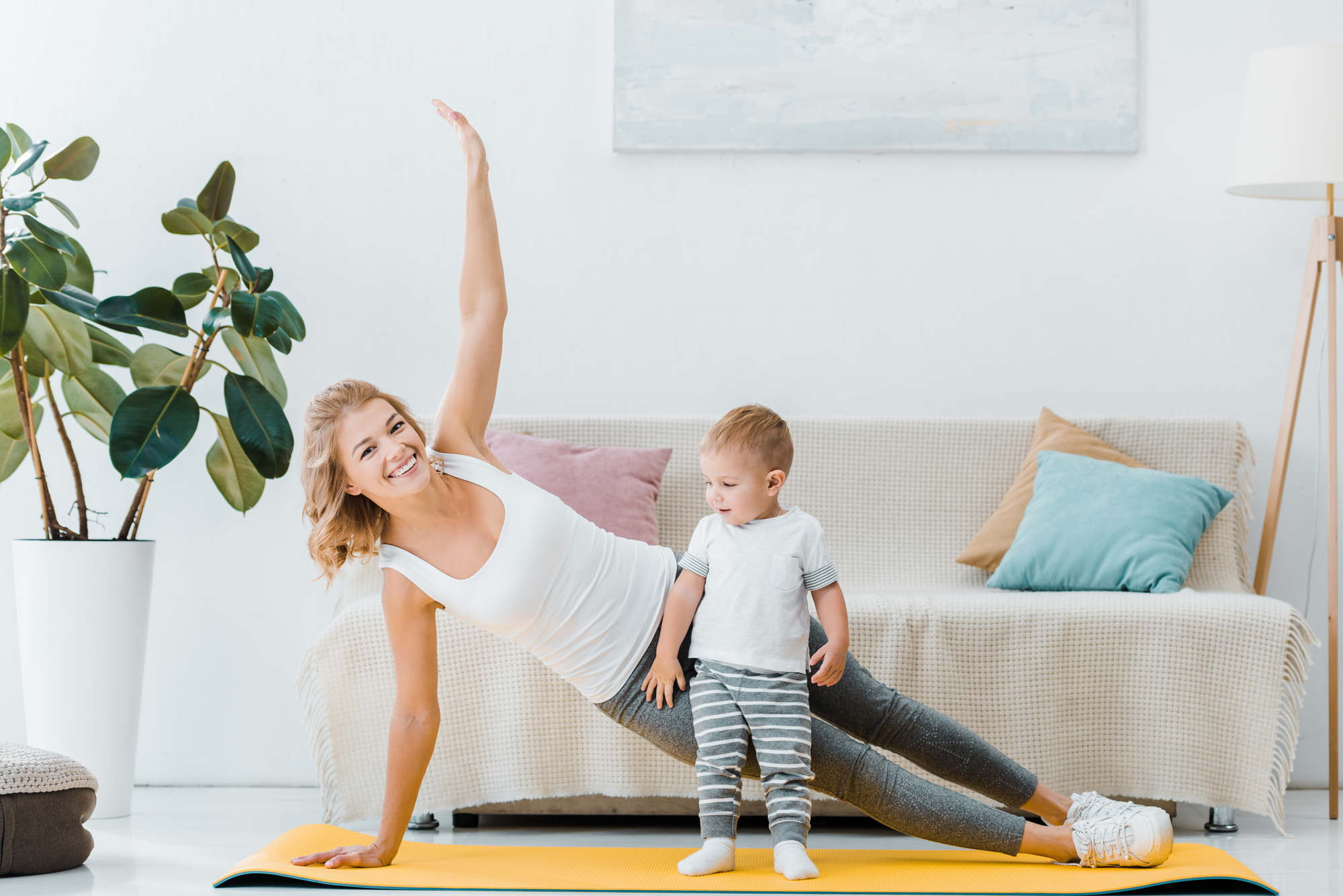As a busy mum, how do you keep yourself motivated to exercise when we have other priorities like household chores, work, and taking care of children?
Well, I am here to share some tips on how to fit exercise into your daily routine if you are feeling time-poor.
Firstly I always tell my clients who are mums to try and incorporate exercise into what they are doing during the day whether it be cooking dinner, doing household chores or bathing the children. Perform functional type exercises that do not require equipment. E.g. kitchen bench push-ups, bath tricep dips, lunges, squats, calf raises.
When cleaning the house move quickly to get the heart rate up or put on some dance music that will encourage you to move to the beat when cleaning.
Having a treadmill, cross trainer or exercise bike set up in the living room or a room that has a TV is also a great way to get some extra cardio. Rather than sitting on the couch using the treadmill, cross trainer or bike whilst watching your favourite TV show or news.
Another great idea, especially for those who experience back, neck or shoulder pain is to sit on an exercise ball and perform some core stability exercises. Not only are you improving your balance and core stability, you are also decreasing the symptoms associated with back pain from prolonged sitting.
Finally, don’t be afraid to put on the joggers and put the baby or toddler in the pram and go for walk. With younger children who can ride scooters or bikes, drive to a local park that has good footpaths and follow the children on foot.
A mum’s health and fitness do affect your capacity to work, energy levels and be present for your family. By keeping yourself relatively fit (and I am not meaning ‘gym junkie’) and spending up to 30 min a day is the current recommendation for cardio. If you feel you can’t find 30 minutes a day to exercise, then you can most certainly break this up in to 3 x 10 minute bouts or 2 x 15 minute bouts. The current recommendations for improving or maintaining strength is to participate in 2-3 bouts of resistance-type exercise per week. This could include yoga, pilates, tai chi or even performing resistance exercises with your own body weight.
By following these simple exercise guidelines you will discover that you have more energy, be more productive at work and home, less pre-menstrual symptoms, improved overall mood, less stress and less fatigue at the end of the day.
Exercising daily helps decrease stress by reducing cortisol (a stress hormone) and increase the good happy chemicals endorphins, which are responsible for making you feel happy. And when you feel happy and less stressed, you are more productive!
Now as women we are generally great a multi-tasking, especially when you are working and have a family to take care of. Another way to make sure you include ‘exercise’ in your weekly schedule is to make an appointment with yourself. Book your exercise in a diary or wall calendar, so that everyone, including yourself, knows about it and DO NOT change it because someone needs you to do something. If there is an emergency – work or personal do not cancel this appointment, just reschedule it to another time in the day or during the week.
A lot of my clients find that if they schedule time first thing in the morning before going to work or starting their day, then they feel more invigorated to start their day and also, they don’t feel guilty when the end of the day comes and they are too tired to exercise. Another option is rather than meeting a friend for lunch or coffee meets them for an exercise session. This way you can catch up on all the gossip, whilst also getting a great workout.
What are the best exercises for busy mums?
The best exercise is any that does not involve the gym or a lot of equipment;
- Wall or kitchen bench push-ups,
- Tricep dips on the edge of bath or kitchen bench,
- Lunges down the hallway,
- Squats with a washing basket,
- Calf raises on a footstool or on a step,
- Stair climbing
- Walking
Finally, I have created a list of tips to help mums maintain motivation and adherence to exercise;
- Plan to exercise – if you put it in your diary like an appointment, you will do it,
- Exercise with a friend/partner – when there is someone else counting on you being there you are less likely to ‘not do it’,
- Record your progress – steps, repetitions, weight, time etc
- Include your children – put them in the pram or on their bikes/scooters and go for a walk,
- Choose a variety of exercises – don’t stick to the one exercise routine, mix it up a little to keep yourself interested and motivated,
- Participate in activities that are not seen as ‘standard’ exercise – dancing, ice-skating, rollerblading/roller skating, surfing,
- If you are still stuck or scared you may hurt yourself, get some expert advice from a Personal Trainer or Exercise Physiologist.









